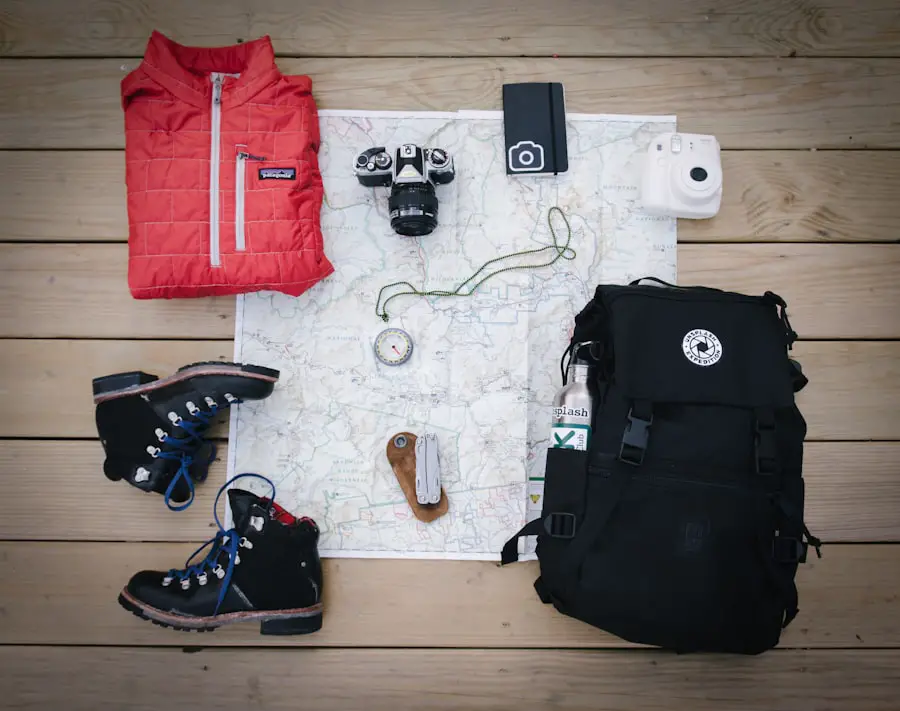Hiking is often perceived as a leisurely activity, a way to connect with nature and escape the hustle and bustle of daily life. However, the reality is that hiking can be physically demanding, requiring a level of fitness and preparation that many may overlook. Engaging in a structured hiking training regimen is crucial for both novice and experienced hikers alike.
Training not only enhances physical capabilities but also boosts confidence, allowing individuals to tackle more challenging trails and enjoy the experience to its fullest. Moreover, proper training can significantly reduce the risk of injury. Many hikers underestimate the physical demands of a long trek, leading to strains, sprains, or even more severe injuries.
By preparing the body through targeted exercises and conditioning, hikers can build the necessary strength and endurance to navigate various terrains safely. This preparation is particularly important for those planning to hike in remote areas or at high altitudes, where the physical challenges can be amplified.
Key Takeaways
- Proper training is essential for hiking to build endurance, strength, and mental preparation.
- Understanding trail terrain is crucial for planning and preparing for a hike.
- Building endurance and strength through regular training is important for a successful hiking experience.
- Choosing the right gear, including footwear and socks, is essential for comfort and safety on the trail.
- Proper nutrition, hydration, and rest are key factors in preparing for and recovering from hiking.
Understanding Trail Terrain
The terrain of a hiking trail can vary dramatically, influencing not only the difficulty of the hike but also the type of training required. Trails can range from flat, well-maintained paths to rugged, steep inclines with loose rocks and roots. Understanding these variations is essential for effective training.
For instance, a hiker preparing for a trek in the Rocky Mountains must train differently than someone planning to hike along a coastal path. Familiarity with different types of terrain allows hikers to tailor their training programs accordingly. For example, if a trail features significant elevation changes, incorporating hill workouts into training becomes essential.
Similarly, if a trail is known for its rocky surfaces, practicing balance and agility on uneven ground can help prepare the body for the challenges ahead. By analyzing the specific characteristics of the intended trail, hikers can develop a more focused training plan that addresses their unique needs.
Building Endurance and Strength

Endurance and strength are two critical components of hiking fitness. Endurance allows hikers to sustain prolonged physical activity without fatigue, while strength helps them navigate challenging sections of trails with ease. To build endurance, hikers should engage in cardiovascular exercises such as running, cycling, or swimming.
These activities improve cardiovascular health and increase stamina, enabling hikers to tackle longer distances without succumbing to exhaustion. Strength training is equally important, as it prepares the muscles for the demands of hiking. Focusing on core strength, leg muscles, and upper body strength can enhance overall performance on the trail.
Exercises such as squats, lunges, and deadlifts target the major muscle groups used in hiking. Additionally, incorporating resistance training with weights or resistance bands can further enhance muscle strength and endurance. A well-rounded approach that combines both endurance and strength training will equip hikers with the physical capabilities needed for diverse hiking experiences.
Choosing the Right Gear
| Gear Type | Advantages | Disadvantages |
|---|---|---|
| Running Shoes | Provide cushioning and support for running | May be expensive and need to be replaced regularly |
| Backpack | Allows for hands-free carrying of essentials | Can cause back strain if not fitted properly |
| Moisture-wicking Clothing | Keeps the body dry and comfortable during exercise | May be less stylish than regular clothing |
Selecting appropriate gear is a fundamental aspect of hiking preparation that can significantly impact comfort and performance on the trail. The right equipment not only enhances safety but also contributes to an enjoyable hiking experience. Essential gear includes a well-fitted backpack, weather-appropriate clothing, navigation tools, and safety equipment.
Each piece of gear should be chosen based on the specific conditions expected during the hike. When selecting a backpack, factors such as size, weight distribution, and comfort are paramount. A properly fitted backpack should distribute weight evenly across the shoulders and hips to prevent strain during long hikes.
Additionally, clothing should be chosen based on the climate and terrain; moisture-wicking fabrics are ideal for hot weather, while layered clothing is essential for colder conditions. Navigation tools like maps or GPS devices are crucial for staying on course, especially in unfamiliar areas. Investing in quality gear tailored to individual needs can make a significant difference in overall hiking performance.
Nutrition and Hydration for Hiking
Nutrition plays a vital role in preparing for and recovering from hikes. A well-balanced diet rich in carbohydrates, proteins, and healthy fats provides the energy needed for sustained physical activity. Carbohydrates are particularly important as they serve as the primary fuel source during prolonged exercise.
Foods such as whole grains, fruits, and vegetables should be staples in a hiker’s diet leading up to a trek. Hydration is equally critical; maintaining proper fluid levels helps prevent fatigue and enhances overall performance. Dehydration can lead to decreased endurance and increased risk of heat-related illnesses.
Hikers should aim to drink water regularly throughout their training and during hikes, adjusting their intake based on temperature and exertion levels. Electrolyte-rich drinks can also be beneficial during long hikes or in hot conditions to replenish lost minerals. By prioritizing nutrition and hydration, hikers can optimize their performance and recovery.
Proper Footwear and Socks

Footwear is one of the most crucial elements of hiking gear, as it directly affects comfort and safety on the trail. The right pair of hiking boots or shoes should provide adequate support, traction, and protection from the elements. When selecting footwear, hikers should consider factors such as fit, terrain type, and intended use.
For instance, lightweight shoes may be suitable for well-maintained trails, while sturdier boots are necessary for rugged or uneven terrain. Equally important is choosing the right socks to complement hiking footwear. Moisture-wicking socks made from synthetic materials or merino wool help keep feet dry and reduce the risk of blisters.
Proper sock thickness should also be considered; thicker socks provide additional cushioning but may require larger footwear sizes to accommodate them comfortably. Ensuring that both footwear and socks fit well is essential for preventing discomfort during long hikes.
Trail Safety and First Aid
Safety on the trail is paramount for any hiker, regardless of experience level. Understanding potential hazards and being prepared for emergencies can make all the difference in ensuring a safe hiking experience. Hikers should familiarize themselves with common risks such as wildlife encounters, adverse weather conditions, and navigation challenges.
Carrying essential safety gear like a first aid kit, whistle, flashlight, and multi-tool can provide peace of mind while exploring remote areas. In addition to carrying safety equipment, hikers should also have basic first aid knowledge to address minor injuries or emergencies that may arise on the trail. Knowing how to treat cuts, scrapes, sprains, or insect bites can prevent minor issues from escalating into more serious problems.
It’s advisable for hikers to take a wilderness first aid course to gain confidence in their ability to handle emergencies effectively. Being prepared not only enhances personal safety but also contributes to a more enjoyable hiking experience.
Mental Preparation for Hiking
Mental preparation is often overlooked in discussions about hiking training; however, it plays a crucial role in overall performance and enjoyment on the trail. Hiking can be physically demanding but also mentally challenging due to factors such as fatigue, fear of heights, or anxiety about navigating unfamiliar terrain. Developing mental resilience through visualization techniques or mindfulness practices can help hikers manage stress and maintain focus during challenging moments.
Setting realistic goals is another important aspect of mental preparation. Hikers should assess their abilities honestly and choose trails that match their skill level while still providing opportunities for growth. Celebrating small achievements along the way can boost confidence and motivation for future hikes.
By fostering a positive mindset and preparing mentally for potential challenges, hikers can enhance their overall experience on the trail.
Incorporating Hills and Inclines in Training
Training on hills and inclines is essential for preparing for hikes that feature significant elevation changes. Climbing uphill requires different muscle engagement compared to flat terrain; therefore, incorporating hill workouts into training routines is vital for building strength and endurance specific to hiking conditions. Hill repeats—where hikers ascend a hill multiple times—are an effective way to improve cardiovascular fitness while strengthening leg muscles.
In addition to hill workouts, finding local trails with varying elevations can provide practical experience in navigating inclines. This not only helps build physical strength but also allows hikers to practice pacing themselves during climbs—a crucial skill when tackling steep sections on longer hikes. By integrating hills into training regimens, hikers can better prepare their bodies for the demands of challenging trails.
Cross Training for Hiking
Cross-training is an effective strategy for enhancing overall fitness while reducing the risk of overuse injuries associated with repetitive activities like hiking. Engaging in various forms of exercise—such as swimming, cycling, or yoga—can improve cardiovascular health, flexibility, and strength without placing excessive strain on specific muscle groups used in hiking. For instance, swimming provides an excellent low-impact workout that builds endurance while minimizing stress on joints.
Cycling complements hiking by strengthening leg muscles while improving cardiovascular fitness through varied intensity levels. Yoga enhances flexibility and balance—both essential attributes for navigating uneven terrain safely. By incorporating cross-training into their routines, hikers can develop well-rounded fitness that supports their hiking goals.
Recovery and Rest for Hiking Training
Recovery is an often-neglected aspect of training that is crucial for long-term success in hiking endeavors. After intense workouts or long hikes, allowing time for recovery helps muscles repair and rebuild stronger than before. This process not only reduces fatigue but also minimizes the risk of injury associated with overtraining.
Active recovery techniques—such as gentle stretching or low-intensity activities like walking—can promote blood flow to muscles without placing additional strain on them. Additionally, prioritizing sleep is essential; quality rest allows the body to recover effectively from physical exertion while supporting overall health and well-being. By recognizing the importance of recovery in their training regimen, hikers can enhance their performance on the trail while ensuring they remain injury-free over time.
If you’re looking to enhance your hiking experience, one important aspect to consider is your attire. Check out this article on traveler pants that are perfect for outdoor activities like hiking. Additionally, having the right gear can make a huge difference in your overall enjoyment. Make sure to read up on the best travel trailer batteries to ensure you have a reliable power source for your adventures.
FAQs
What is hiking training?
Hiking training involves preparing your body for the physical demands of hiking, including building strength, endurance, and flexibility.
Why is hiking training important?
Hiking training is important to prevent injuries, improve performance, and enhance the overall hiking experience.
What are some key components of hiking training?
Key components of hiking training include cardiovascular exercise, strength training, flexibility work, and practicing hiking-specific skills such as navigating uneven terrain and carrying a backpack.
How often should I train for hiking?
It is recommended to train for hiking at least 3-4 times per week, with a combination of cardiovascular, strength, and flexibility exercises.
What are some specific exercises for hiking training?
Specific exercises for hiking training include walking or hiking on inclines, stair climbing, squats, lunges, core exercises, and yoga or stretching routines.
How can I prepare for hiking at higher altitudes?
To prepare for hiking at higher altitudes, it is beneficial to incorporate cardiovascular training at higher elevations, gradually increase the intensity and duration of your workouts, and stay well-hydrated.
What should I consider when training for long-distance hiking?
When training for long-distance hiking, it is important to gradually increase your mileage, practice carrying a loaded backpack, and focus on building endurance through longer duration workouts.
